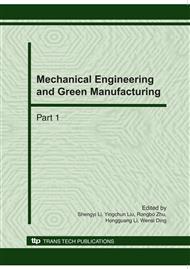p.1477
p.1483
p.1488
p.1493
p.1497
p.1501
p.1507
p.1512
p.1516
A New Simulating Model of Wireless Channel - Rayleigh-Normal Model
Abstract:
Simulating and researching for characteristics of channel is essential when designing a wireless communications system. Based on the research of existed simulating methods, this paper proposed the Rayleigh-Normal simulating model which looks received signal as the linear combination of Rayleigh stochastic process and Normal stochastic process. This method was used to simulate the first-order statistical characteristics of Rayleigh model, Ricean model, Nakagami model, Lognormal model and so on, the simulating results prove that Rayleigh-Normal simulating model is a correct and valid simulating model for wireless channel.
Info:
Periodical:
Pages:
1497-1500
Citation:
Online since:
October 2010
Authors:
Keywords:
Price:
Сopyright:
© 2010 Trans Tech Publications Ltd. All Rights Reserved
Share:
Citation:


